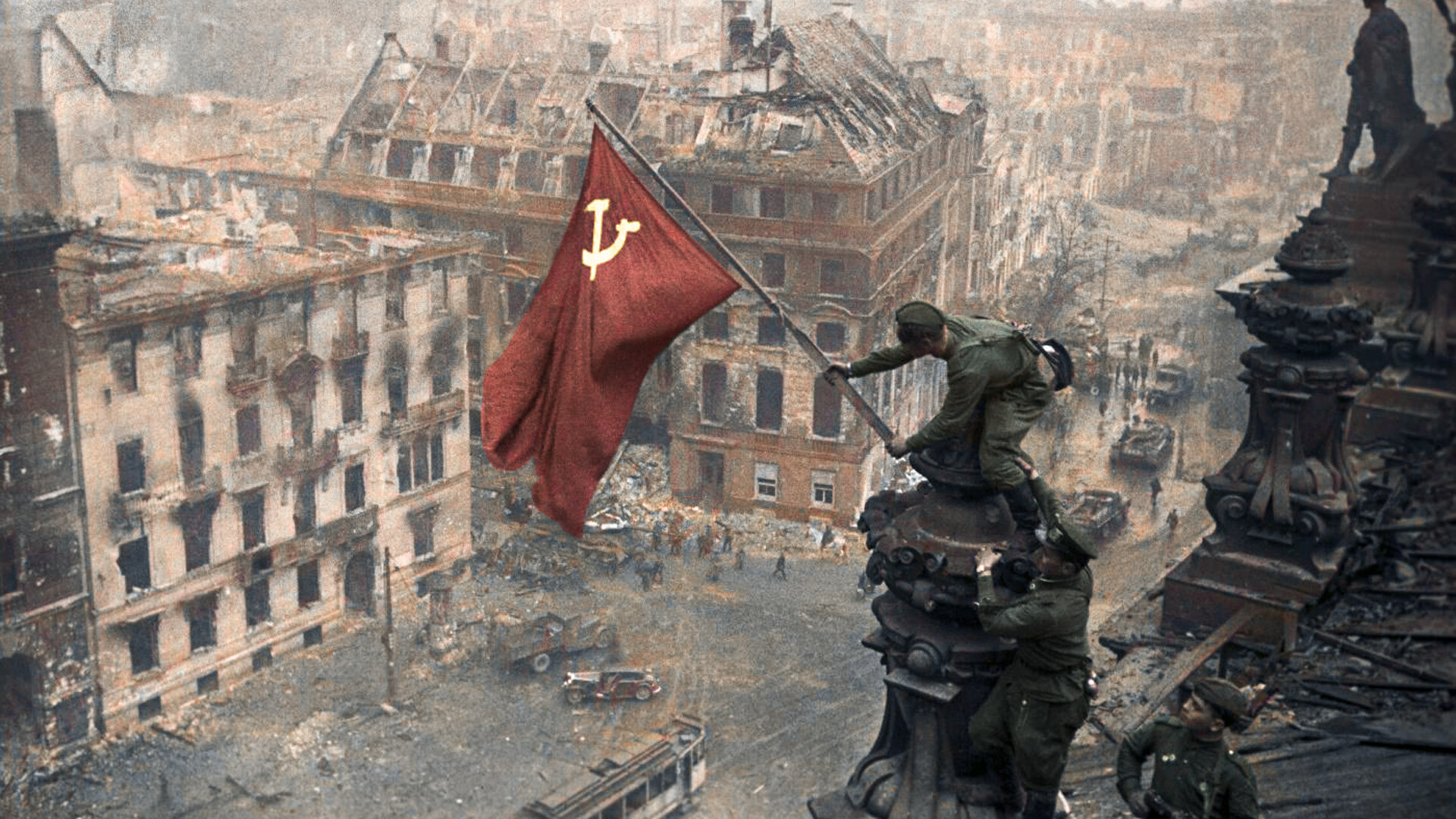
The Banner of Victory on the Reichstag building in Berlin, May 1, 1945.
Archive photoNazi Germany managed to attract human and material resources from almost all of Europe to fight the Soviet Union. Italian, Romanian, Hungarian and Finnish troops, as well as military contingents from Spain, Slovakia and Croatia and volunteers from occupied France, Benelux and Scandinavian countries, fought alongside the Wehrmacht against the Red Army.
Several times during the war, the USSR found itself teetering on the brink of military disaster. In the Fall of 1941, the Germans stood at the gates of Moscow and, in the Summer of 1942, they were a step away from almost completely depriving the country of the “lifeblood of war” - oil.
It was only after the triumph of the ‘Battle of Stalingrad’ that the Soviet Union could breathe more easily. Nevertheless, it still had to endure another two and a half years of bloody warfare.
In our articles, you can read how the Red Army went about achieving its brilliant victory, what bitter lessons it had to learn along the way, what momentous battles unfolded on the territory of the USSR and Eastern, Southern and Central Europe and how these battles were perceived by the top brass and ordinary soldiers on the warring sides.
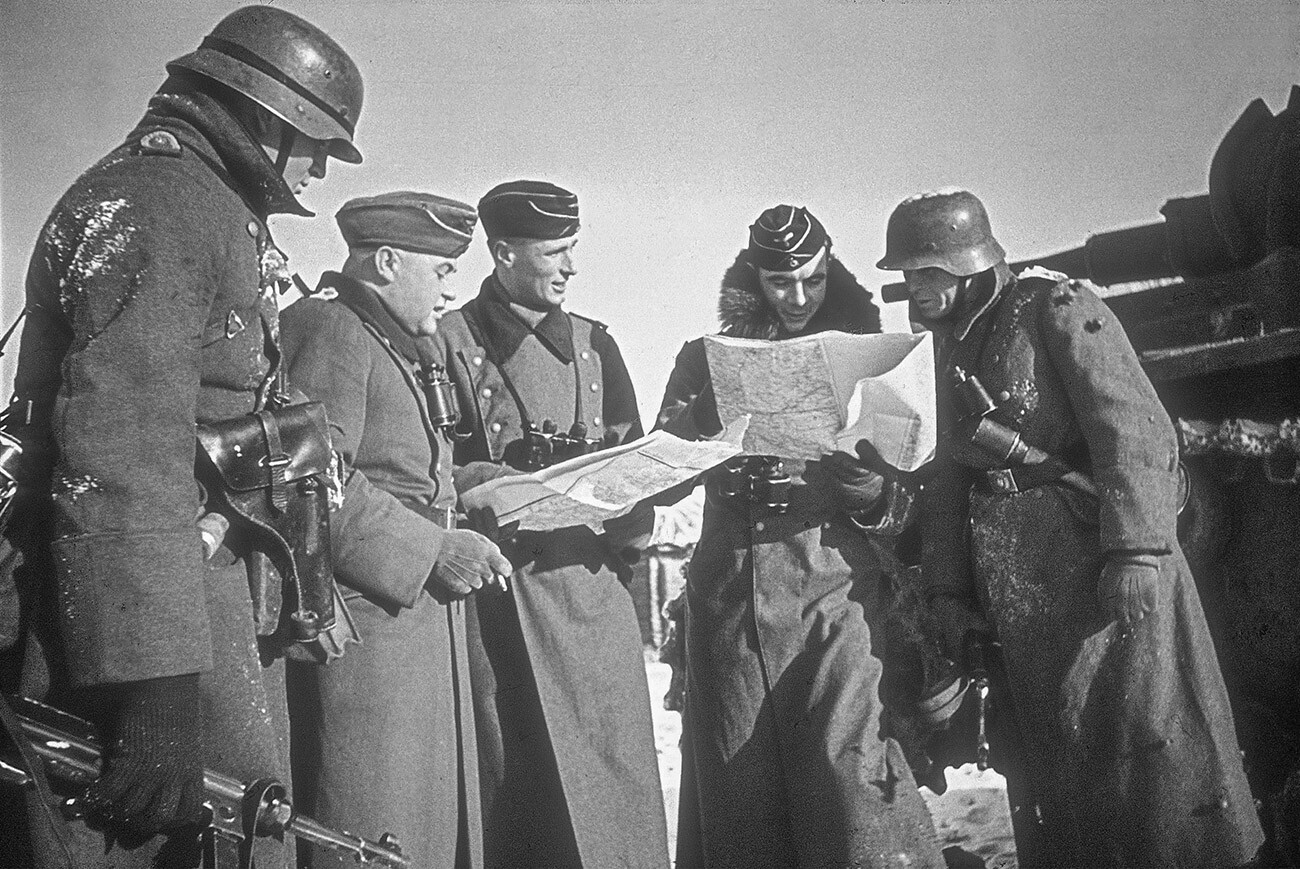
German troops near Moscow.
Getty ImagesAt 4 a.m. on June 22, 1941, Nazi Germany forces breached the borders of the Soviet Union in ‘Operation Barbarossa’ and advanced in the direction of the country’s three main cities: Moscow, Leningrad and Kiev. The enemy offensive managed to achieve almost complete operational and tactical surprise.
Catastrophic problems with the availability of radio communications among the troops, poor organization of the work of military staff and of troop command and control, feeble coordination among sub-units and their lack of combat experience and mistakes by the Soviet military command led to heavy defeats for the Red Army.
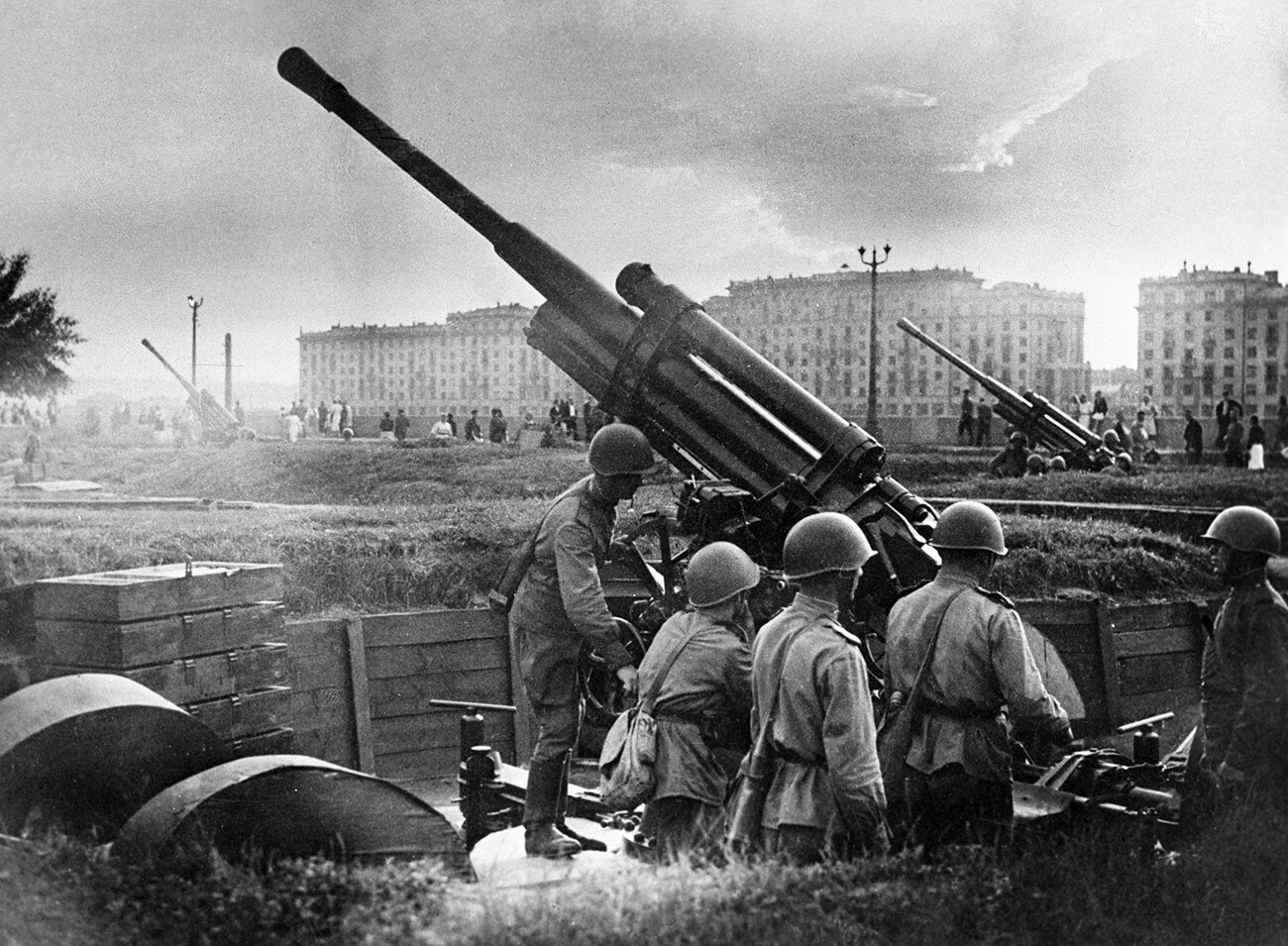
Soviet anti-air guns in Moscow.
Naum Granovsky/SputnikDespite the Soviet troops’ fierce resistance, the Wehrmacht relentlessly advanced: On June 24, Vilnius was captured; on June 28 - Minsk; on July 1, the Germans took Riga; on September 8, they completed the encirclement of Leningrad; and, on September 15, a large “cauldron” was formed around Kiev. It seemed that nothing could stop the Germans from taking Moscow; however, on the approaches to the capital, they were destined to suffer a complete reverse.
You can read in more detail how the Soviet Union survived the first year of the war and how, after suffering terrible disaster, the Red Army still managed to halt the German blitzkrieg, here.
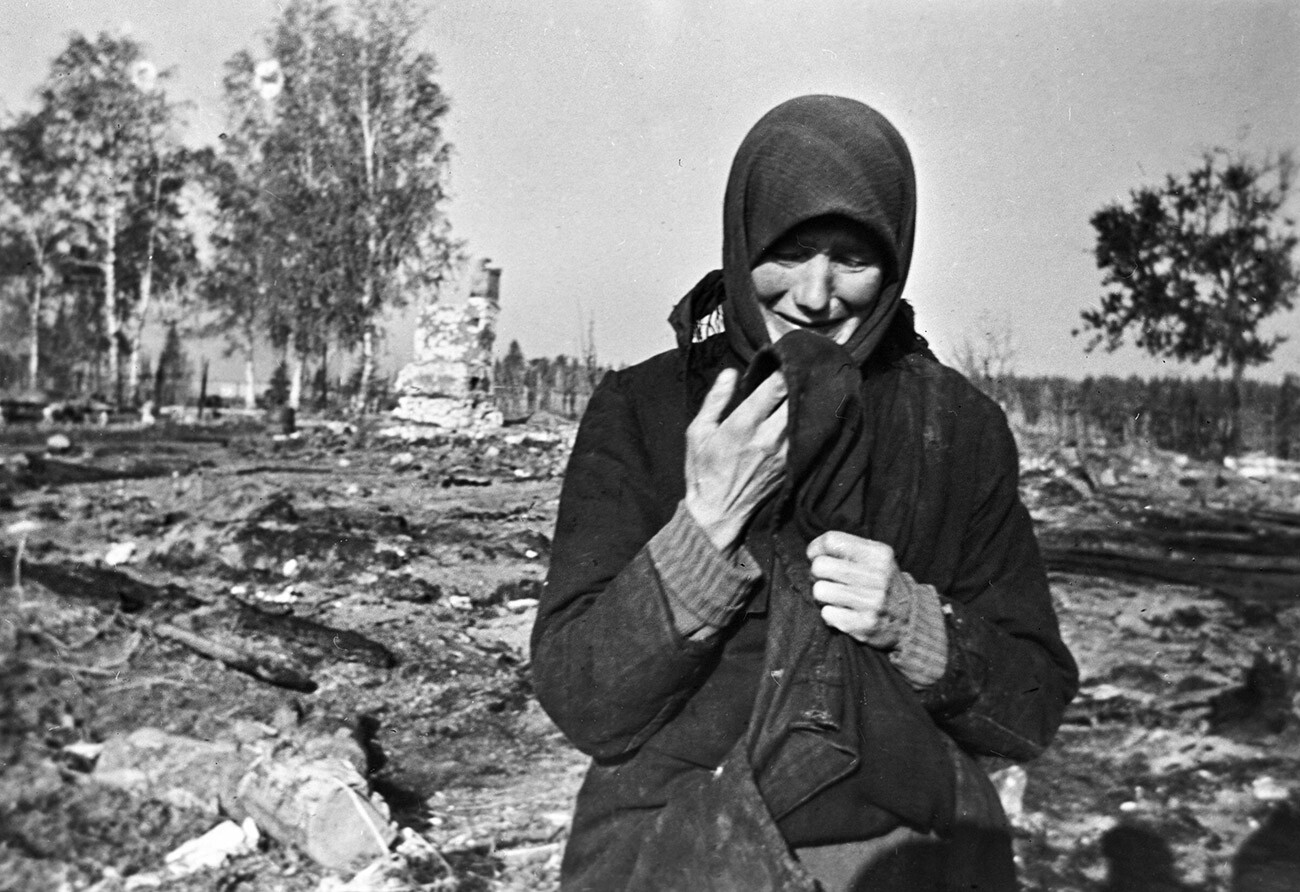
Woman weeping on the ruins of her native village burnt by the Nazis.
Oleg Knorring/SputnikAs a result of a sudden large-scale counteroffensive by Soviet troops outside Moscow, the stunned enemy were pushed several hundred kilometers back from the city. The country’s political leadership decided that the moment had come to seize the initiative in the war. As subsequent events showed, however, it was too early to write the Germans off.
In Winter-Spring 1942, the Red Army attempted to go on the offensive along the whole front line, but, in spreading its forces thinly, it achieved only limited success. Despite the fact that the Germans were partially forced to abandon their positions, they retained an important bridgehead in the Rzhev area from which the Wehrmacht could continue posing a threat to Moscow, they repelled attempts to lift the siege of Leningrad and they held on to a large part of the Crimean Peninsula.
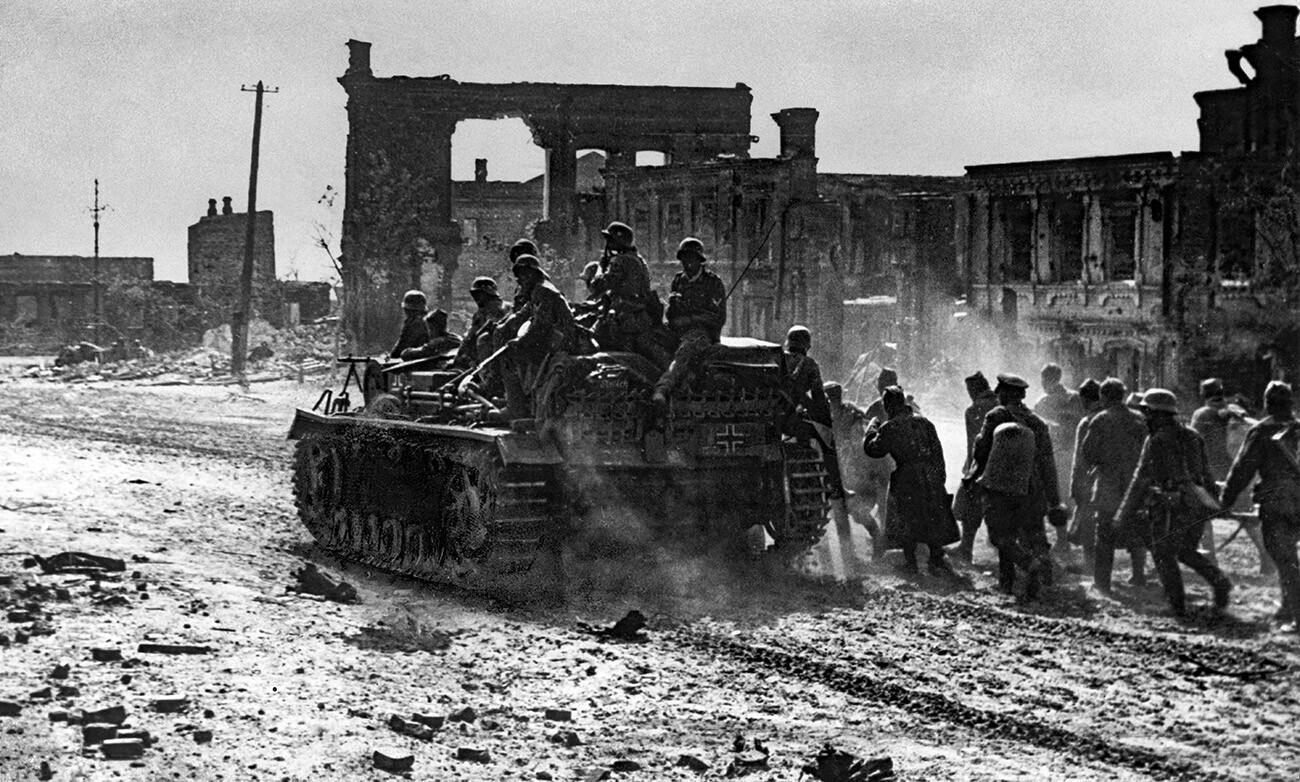
German troops in Stalingrad.
Getty ImagesA May offensive in the Kharkov area ended in complete disaster for the USSR - about 200,000 Soviet soldiers found themselves trapped in a “cauldron”. It was largely because of this defeat that the German blitzkrieg in the south of the country gained a new lease of life.
You can read how the Wehrmacht executed a rapid push to the Volga and almost deprived the Soviet Union of most of its oil deposits and how German troops got drawn into the bloody Battle of Stalingrad, here.
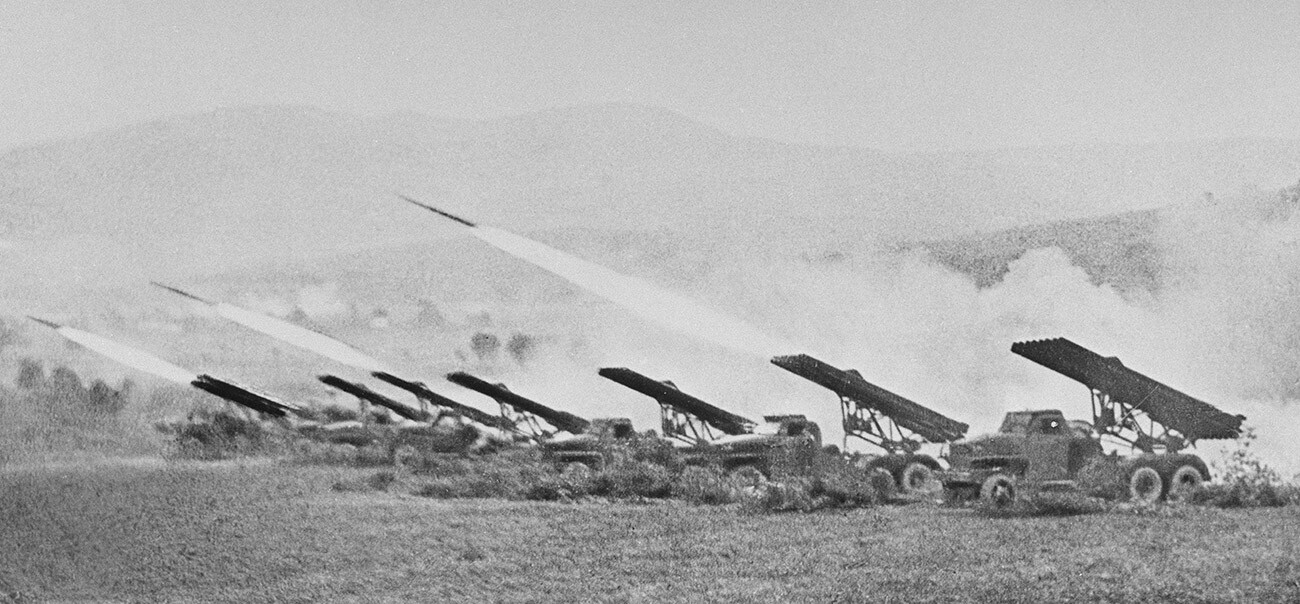
Katyusha rocket launchers firing at the enemy during the battle of Stalingrad.
Georgy Zelma/SputnikIn the ‘Battle of Stalingrad’, the Red Army managed to turn imminent defeat into brilliant victory. It not only destroyed a large German grouping, but also inflicted a crushing defeat on the Italian, Romanian and Hungarian allies of the Nazis.
Pressed by Soviet troops, the Germans withdrew from the banks of the Volga and from the Caucasus (waving goodbye forever to their dream of Soviet oil) and abandoned the Rzhev Salient, thus, conclusively lifting the threat to Moscow. In addition, the Red Army took advantage of the situation and finally broke the Siege of Leningrad.
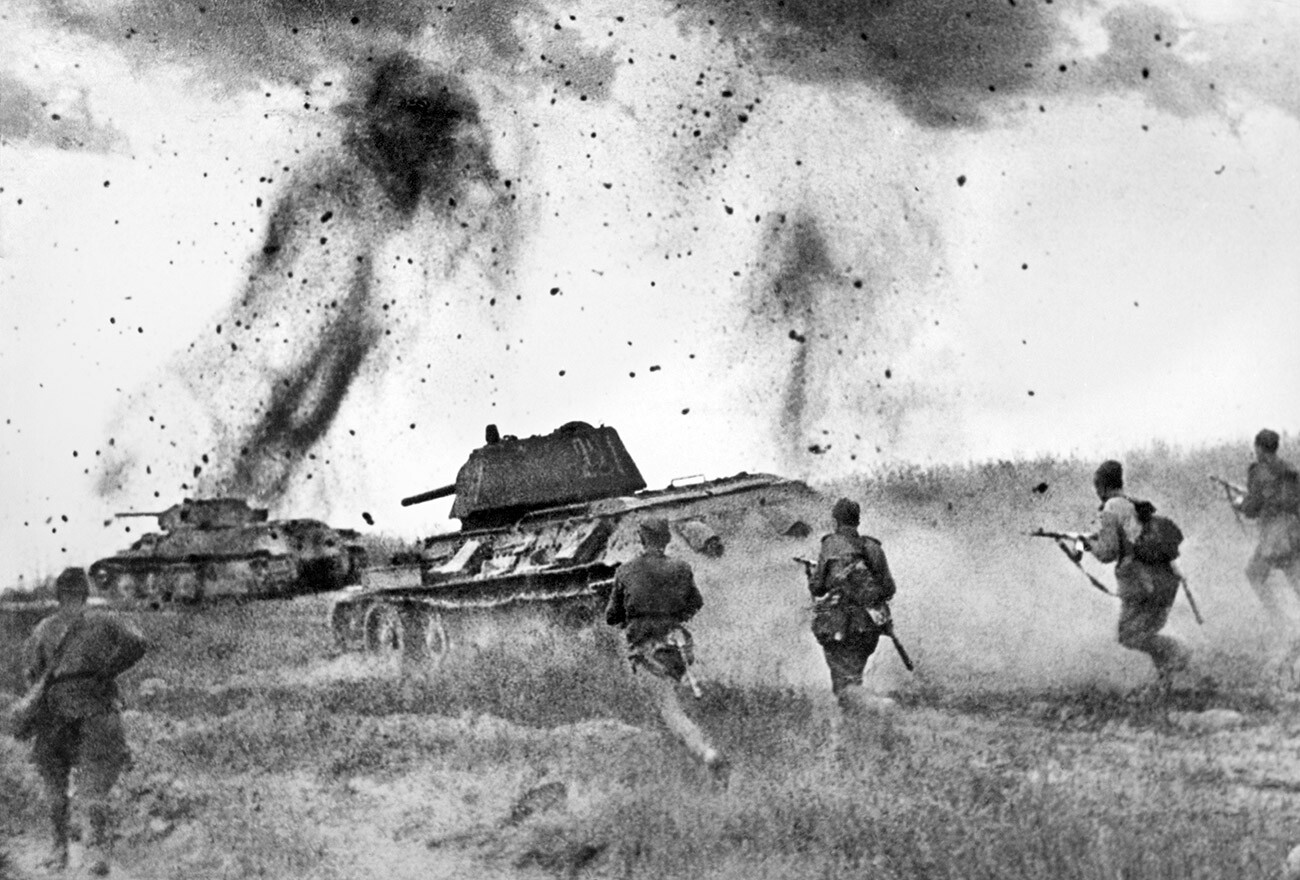
Battle of Kursk.
Georgy Zelma/SputnikAfter the Soviet-German front stabilized in the spring, the sides started to ready themselves for a decisive confrontation in the area of the Kursk Salient. The offensive known as ‘Operation Citadel’ undertaken there in the summer was Hitler’s last attempt to regain the initiative in the war on the Eastern Front.
You can read how the Red Army scored a hugely important victory in the Battle of Kursk and how it surged westwards in pursuit of the overpowered enemy, liberating its own territory from the invaders, here.
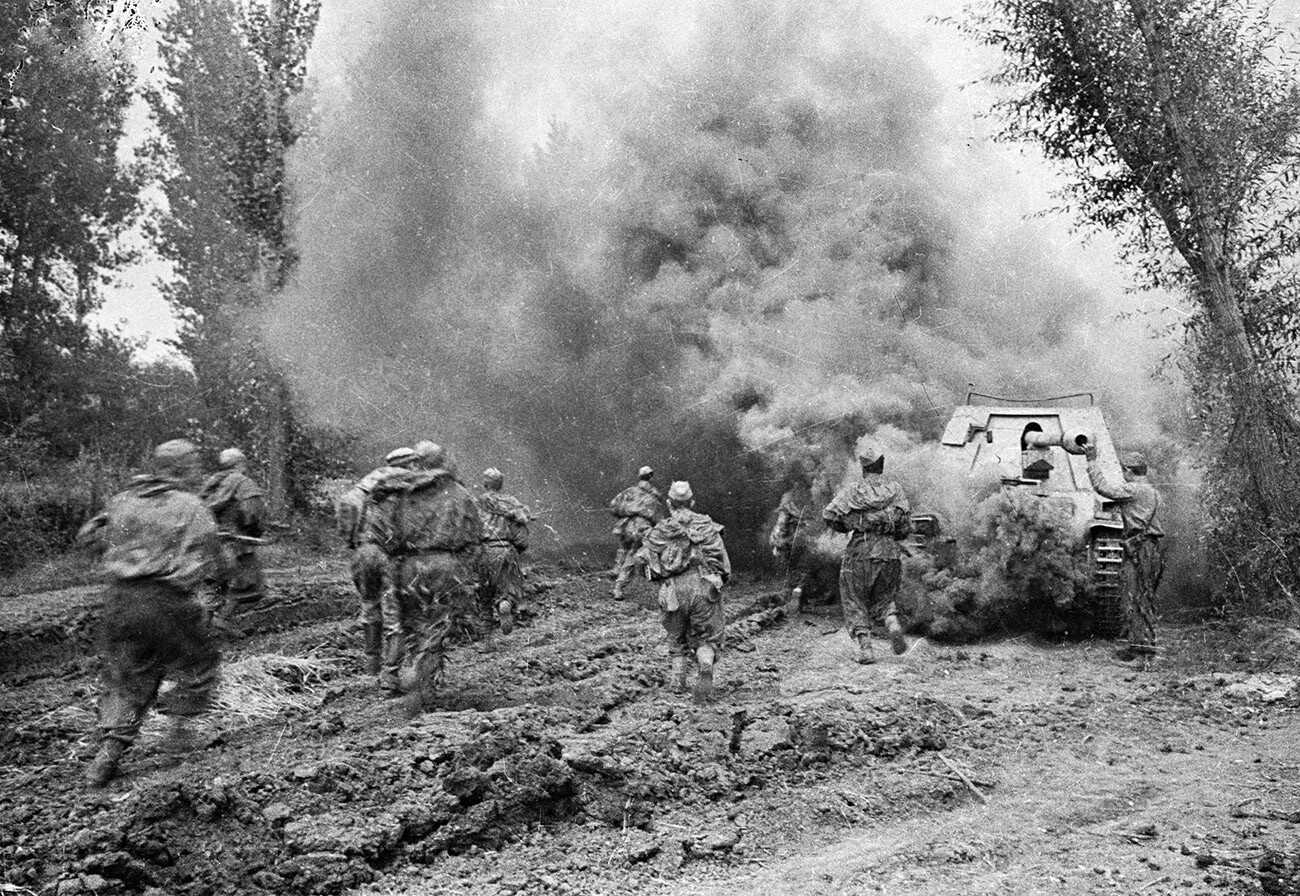
Soviet offensive in Donbass.
Yakov Ryumkin/SputnikAfter the triumph at Kursk, the Soviet troops were unstoppable. In early 1944, they conclusively raised the siege of Leningrad and, by spring, they had completed the liberation of Crimea and almost the whole of Right-Bank Ukraine (west of the River Dnieper). On March 26, the Red Army reached the USSR’s state border with Romania.
In Summer 1944, the Red Army demonstrated to the Wehrmacht that it had taken on board the bitter lessons of 1941 and was now capable of making effective use of the strategy of blitzkrieg. On June 23, almost exactly three years after the start of the German invasion of the USSR, the Byelorussian Offensive, also known as ‘Operation Bagration’, was launched.
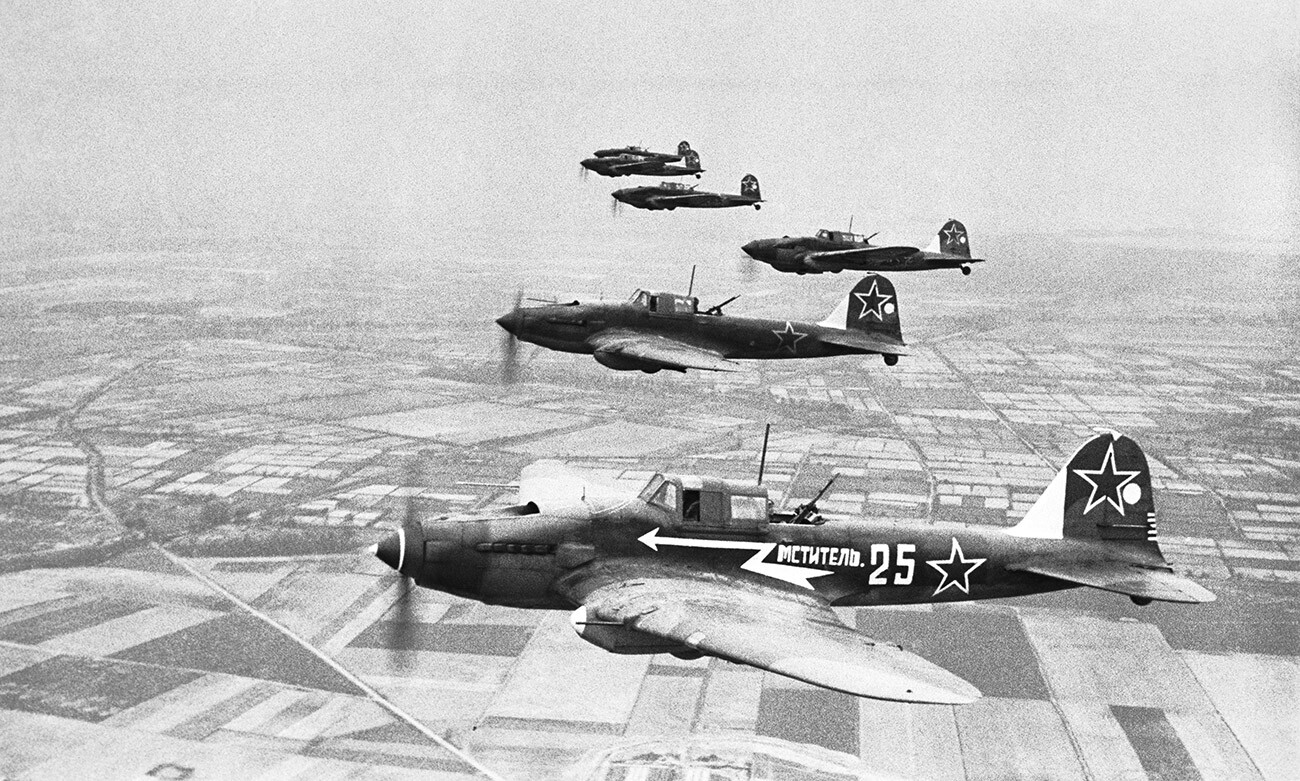
Soviet Il-2 ground-attack planes.
Mark Redkin/TASSIn just two months, the Red Army executed a rapid push 550-600 km westwards, destroying 17 German divisions and liberating the whole of the territory of Byelorussia and a significant part of eastern Poland. Overall, German losses were estimated at around half a million.
You can read how Soviet troops went about liberating Eastern Europe, how 57,000 captured German soldiers and officers were paraded through Moscow and how the USSR deprived Hitler of his Finnish, Romanian and Bulgarian allies, here.
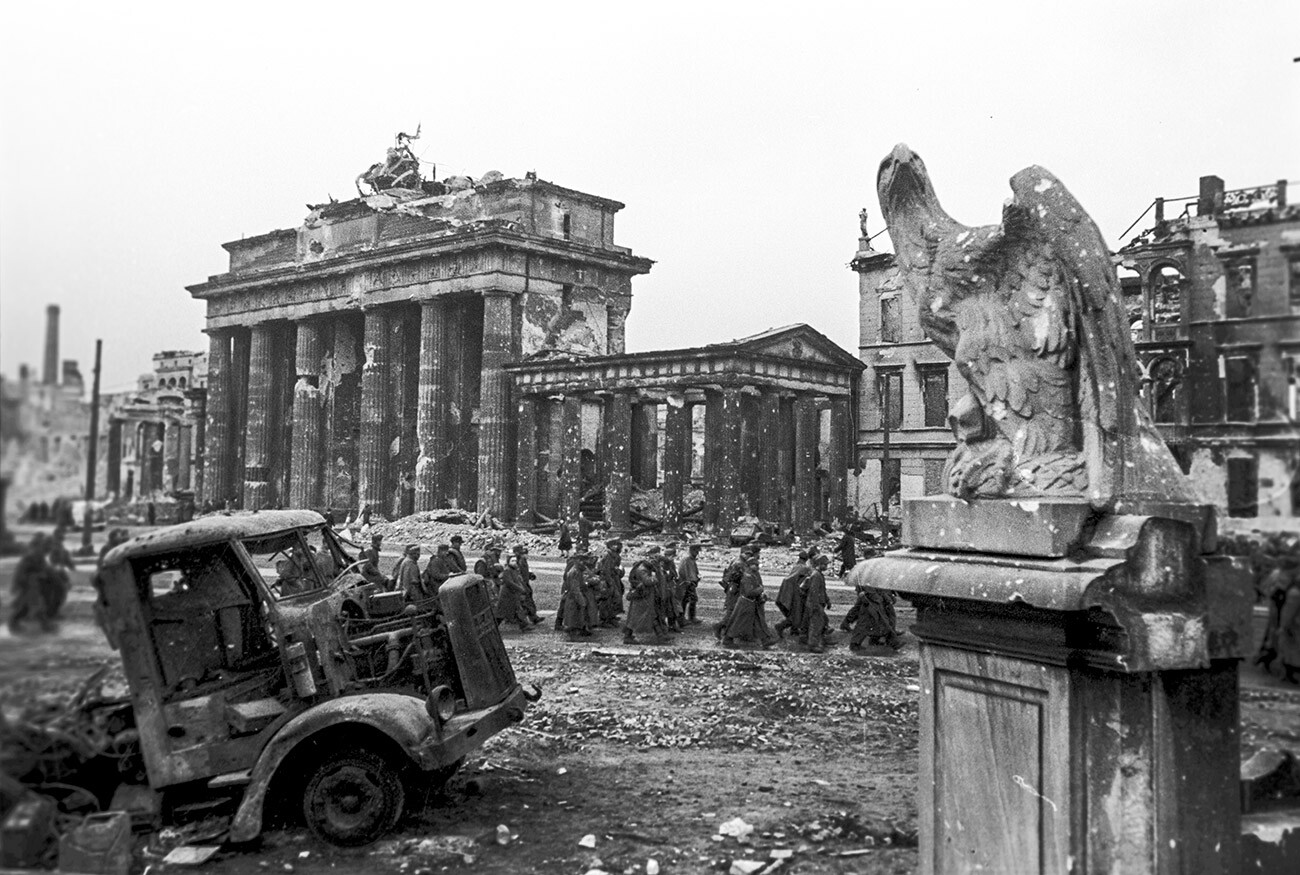
Captive German soldiers passing by the Brandenburg Gate.
Oleg Knorring/SputnikThe Red Army saw in the start of the final year of World War II conducting heavy urban fighting in Budapest and preparing for the liberation of Warsaw and for an offensive in East Prussia. The enemy, severely battle-scarred in the course of 1944, still retained a fairly high operational capability. Despite the loss of important industrial regions and almost all their key allies, the Germans were ready to fight to the finish.
In the Vistula-Oder Offensive in early February, the troops of Marshal Georgy Zhukov’s 1st Byelorussian Front reached the distant approaches to Berlin - just 70 km lay between them and the capital of the Third Reich. While preparations were being put in place for a decisive assault on the city, the Germans mounted their final large-scale offensive of the war.
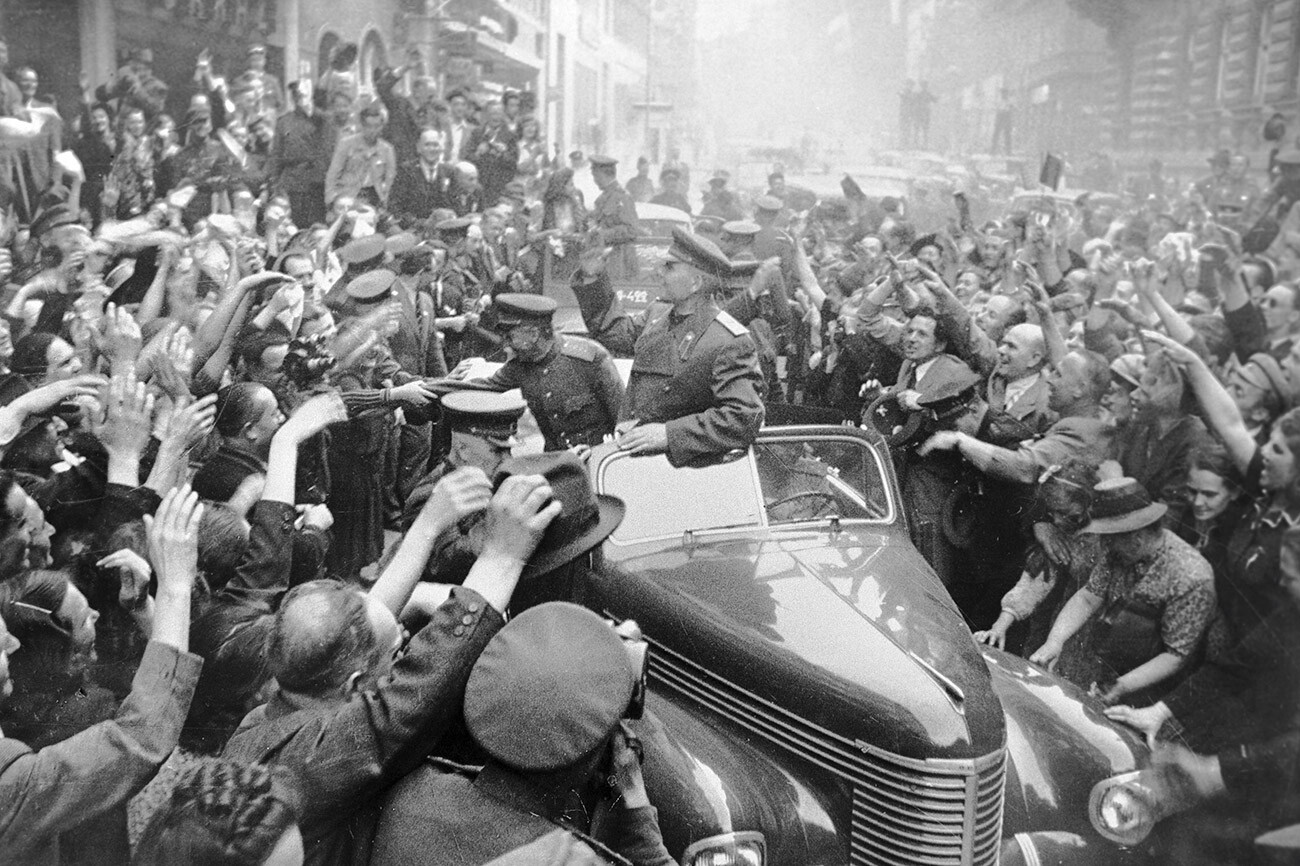
People of Prague welcome Marshal Ivan Konev.
Anatoly Egorov/SputnikAround 400,000 German and Hungarian troops took part in ‘Operation Spring Awakening’ in the area of lakes Balaton and Velence in March 1945, but they only managed to drive a wedge several dozen kilometers deep into the Soviet defenses. After the collapse of the German offensive, the road to Vienna was open to the Red Army.
You can read how the Battle of Berlin unfolded, why large-scale battles continued to take place in Europe even after the capitulation of Germany and how it was that a not insignificant part of Soviet territory was still occupied by the enemy at this time, here.
If using any of Russia Beyond's content, partly or in full, always provide an active hyperlink to the original material.
Subscribe
to our newsletter!
Get the week's best stories straight to your inbox